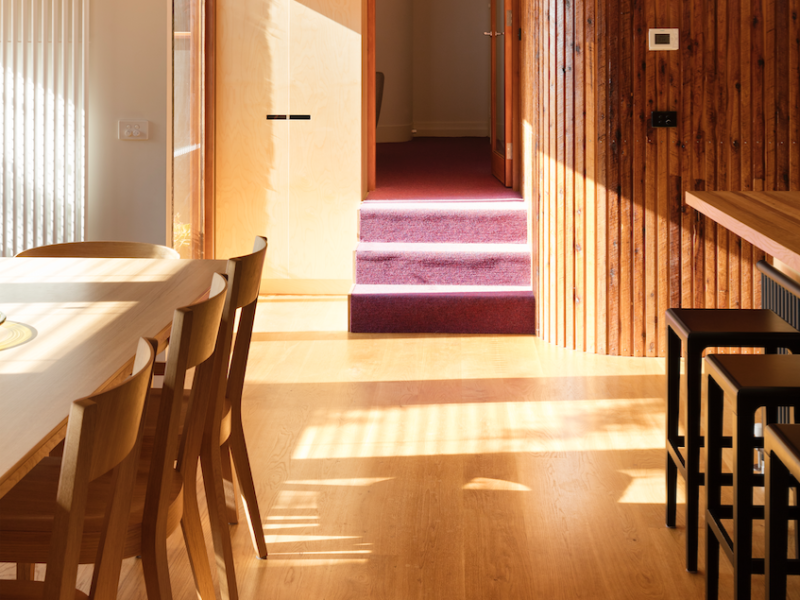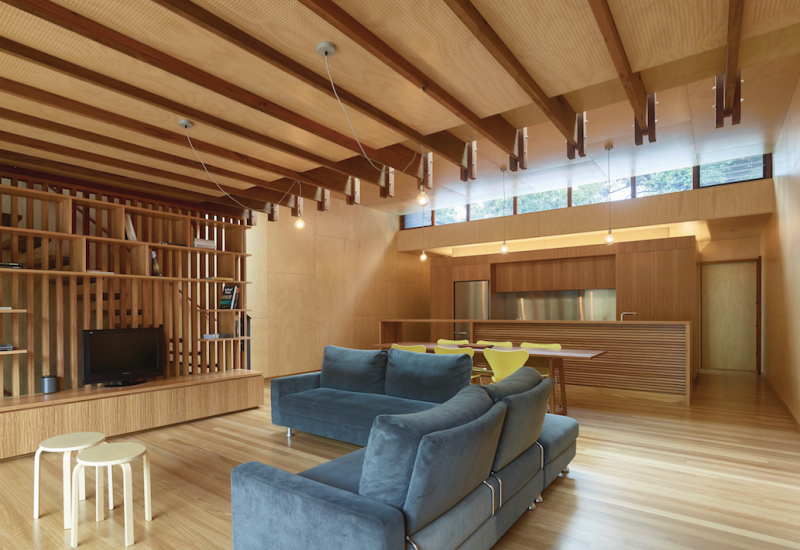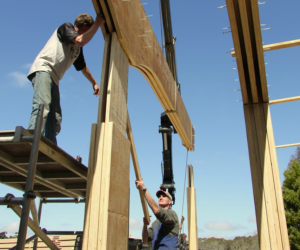Making the most of your internal timber finishes
Before you can show off the beauty of your internal timber joinery off to friends and family, a little care and consideration should be paid to the finishes. Read on for a summary of the different types of coatings and finishes for interior timber – and a WoodSolutions shortcut to finding more information.
Coating timber with paint or a translucent finish can increase its lifespan by protecting it from extensive wear and abrasion and enhance its natural beauty. Applying a finish to internal timber also means it’s easier to clean, so it looks better too.
A good quality finish system should tick all the boxes; providing a water-resistant and long-lasting coverage. Stains and water repellents, on the other hand, may not last as long and require more frequent reapplication if used in exposed or high wear situations. Factory-applied finishes tend to be hardier because they are done in controlled conditions. Due to their strength, factory-coated finishes shouldn’t need refinishing for several years – ideal for anyone looking for a low-maintenance option.
A word of advice for preserving your factory-applied internal timber finish: be sure to protect the timber during storage, installation and construction. If you want to minimise the timber yellowing over time, make sure you look for an assurance on pre-finished products, or choose non-yellowing finishing materials if you are applying them yourself.
The lifespan of timber finishes is determined by a combination of considerations. The quality and type of coating, the care taken in application, the condition of the underlying timber and the wear to which it is exposed are all important. Some timber characteristics can also influence the performance of your chosen finish; these include species, surface texture, moisture content, section profile and material features.
The species and density of timber will affect the performance of an applied finish. If you are unsure about what product is most suitable for your situation, talk to your hardware store or check the finish manufacturers’ websites.
When it comes to surface texture, smooth surfaces offer better substrates for painting than rough surfaces. For conventional paint systems, dressed timber is the ideal choice, while oils and stains are a better choice for rough sawn timber, although they can also perform well on dressed surfaces.
Moisture content is another element to keep in mind. Seasoned, or kiln dried, timber provides a more stable substrate than green timber because the risk of the surface of the coating developing fine cracks from the wood moving under the coating is reduced. Stains and oils are generally preferred when working with green timber or timber with a high moisture content.
The secret to finding the appropriate finish for your internal timber is knowing the specifics and characteristics of your chosen material, along with those of various coating options. Don’t forget that talking to people at your hardware store or consulting manufacturers’ websites can provide useful information.
A good starting point is the free WoodSolutions Design Guide 14 Timber in Internal Design, available here: https://www.woodsolutions.com.au/articles/timber-finishes]




